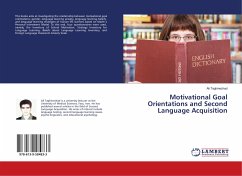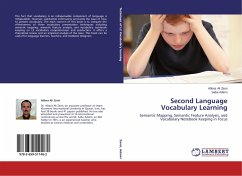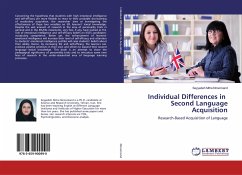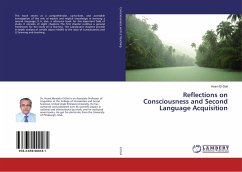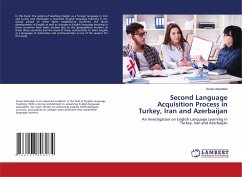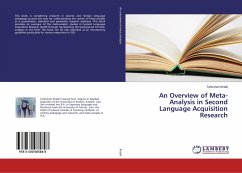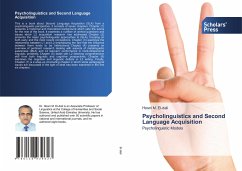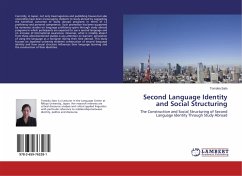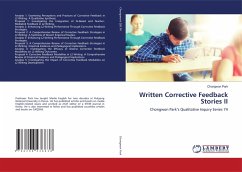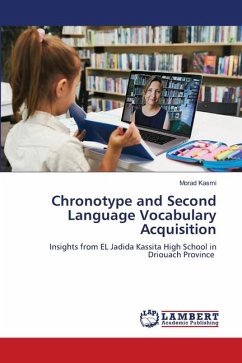
Chronotype and Second Language Vocabulary Acquisition
Insights from EL Jadida Kassita High School in Driouach Province
Versandkostenfrei!
Versandfertig in 6-10 Tagen
45,99 €
inkl. MwSt.

PAYBACK Punkte
23 °P sammeln!
This study examined the connection between chronotype and second language vocabulary acquisition. Using a quantitative method approach, it investigated how chronotype influences vocabulary learning outcomes. The study's sample size was 102. The Morningness- Eveningness Questionnaire was used to categorize the learners into either morning or evening types. The study further analyzed the data using inferential statistics, including independent samples t-tests, to compare vocabulary learning abilities between individuals with different chronotypes, and it also used the paired samples t-test to co...
This study examined the connection between chronotype and second language vocabulary acquisition. Using a quantitative method approach, it investigated how chronotype influences vocabulary learning outcomes. The study's sample size was 102. The Morningness- Eveningness Questionnaire was used to categorize the learners into either morning or evening types. The study further analyzed the data using inferential statistics, including independent samples t-tests, to compare vocabulary learning abilities between individuals with different chronotypes, and it also used the paired samples t-test to compare the means of each group in the morning and afternoon. The findings demonstrated significant differences in vocabulary learning based on chronotype, with morning types outperforming evening types. In addition, in the mornings, larks excel, and in the evenings, owls excel. Effect sizes indicate large and medium effects, highlighting the meaningfulness of the observed differences. This study recommends that language instructors should use this knowledge of chronotype to optimize second language vocabulary learning outcomes.





